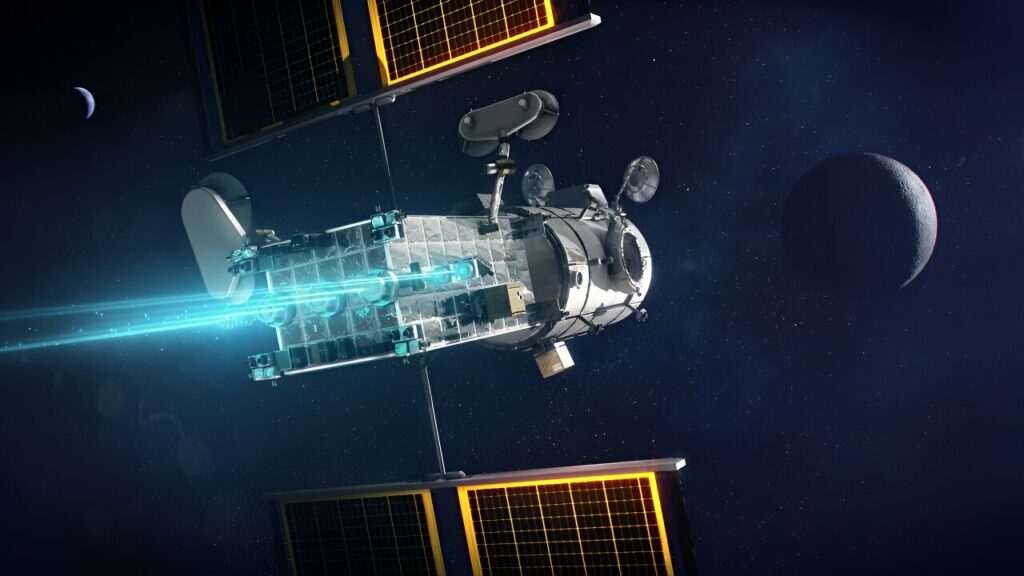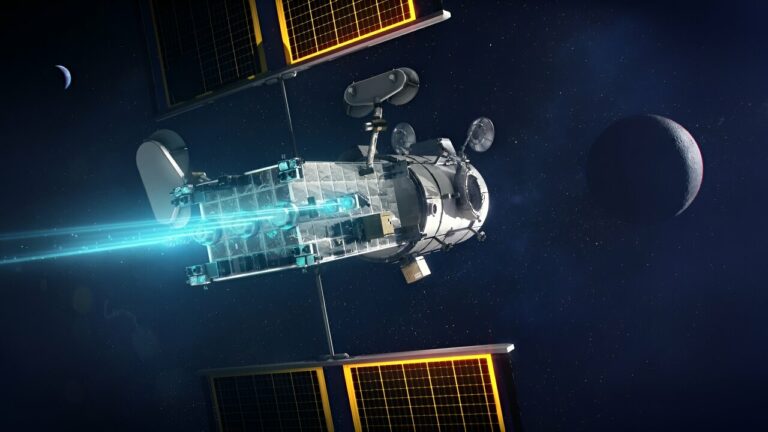Solar electric propulsion systems might be the key to achieving efficient journeys to Mars
There are many different ways to get to Mars, but there are always tradeoffs. Chemical propulsion, proven the most popular, can quickly get a spacecraft to the red planet. But they come at a high cost of bringing their fuel, thereby increasing the mission’s overall cost. Alternative propulsion technologies have been gaining traction in several deep space applications. Now, a team of scientists from Spain has preliminary studied what it would take to send a probe to Mars using entirely electric propulsion once it leaves Earth.
Electric propulsion systems have several advantages over chemical rockets. While they will never be able to be scaled up enough to lift anything heavy into orbit, once in space, they are extraordinarily efficient at moving payloads where they need to go. While a typical chemical rocket requires 70%–90% of its launch mass to be used as fuel, an electric propulsion system can get by with just 10%–40% of its launch mass as fuel.
The tradeoff to be made is in thrust. Electric propulsion systems typically have a thrust at least four orders of magnitude smaller than that created by chemical rockets. Meanwhile, in space, its significant impact is that electric propulsion systems are much slower. But that might not be as much of a concern for uncrewed missions.

So far, no one has spent the time to consider just how much difference there would be between a Mars mission driven by electric rather than chemical propulsion. The closest study was one drawn up for a visit to Mars’ moons—Phobos and Deimos—that relied entirely on electric propulsion. In that study, the researchers found that the chemical propulsion option would require 2.5 times as much mass as the electric propulsion option. That would significantly decrease the overall cost of the mission.
In this new study, published in Acta Astronautica, the researchers focused on a trajectory that would place a 2,000 kg spacecraft into a polar orbit around Mars between 300 km and 1,000 km. The 2,000 kg weight limit was selected as a package that could contain equivalent scientific packages to the ExoMars orbiter that ESA worked on.
With those mission constraints, the researchers considered several different types of electric propulsion systems. They came up with an additional requirement—it must operate at the upper thrust range of many electric propulsion systems. A thrust of .1 N is the minimum required to enter into orbit around Mars successfully.
This constraint led to the selection of the BHT-6000 as the mission’s primary propulsion system. It’s a Hall Effect thruster that operates with between 2 kW and 6 kW of power and can use relatively common electrical propulsion propellants such as Xenon and Krypton. With this selection of propulsion, it was time to get to every astrodynamist’s favorite activity—modeling.
The researchers used a multi-body model to map out the gravitational impact of their selected trajectory. Then, they ran simulations of a mission with a standard chemical propellant and the BHT-6000. What they found seemed in line with general expectations of the advantages of electric propulsion.
In terms of speed, the chemical rocket was faster, but not egregiously so. A chemical rocket could make the journey in a little under a year, while a BHT-6000-powered mission would take approximately 3.2 years from launch. However, the weight of the chemical propulsion system would be 2.4 times that of the electric propulsion system. Even at a relatively conservative launch cost of $10,000 / kg, that would put the cost saving of an electric propulsion system at almost $30 million over the chemical alternative. All at the cost of a few more years of travel time to get the mission on station.
That is a tradeoff many space exploration agencies would gladly pay due to constrained budgets. But, so far, this is only a model as there is no planned deep space mission that would use this electric propulsion method as its primary propulsion system, though a few deep space missions, such as Hayabusa-2, already have. As the technology advances, though, it’s becoming more and more likely that future deep space missions, especially unmanned ones, will go to Mars.
This article is republished from PhysORG under a Creative Commons license. Read the original article.
Do not forget to share your opinion with us to provide you with the best posts !




0 Comments